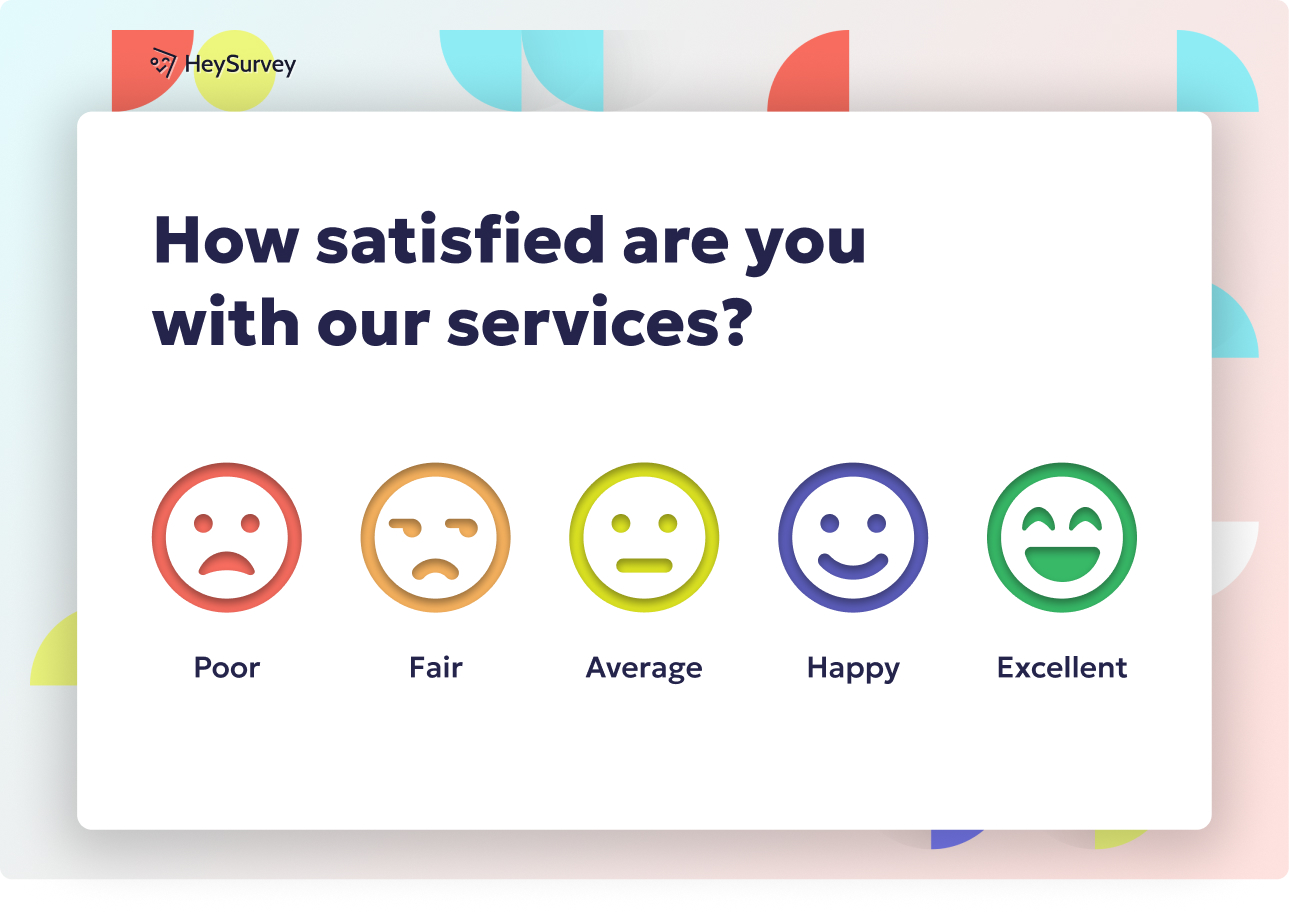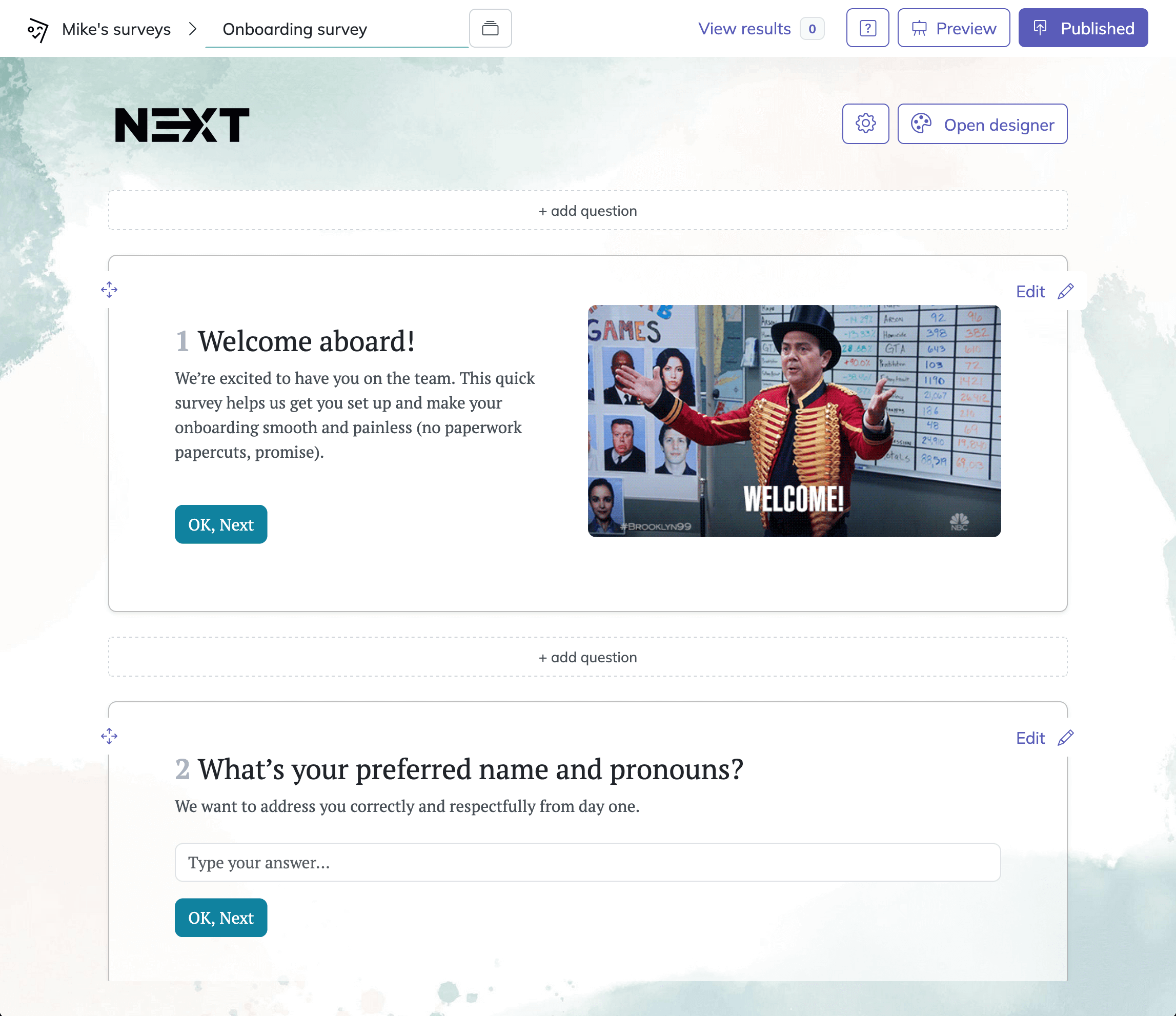30 Demographic Survey Questions for College Students Guide
Explore 35 essential demographic survey questions for college students covering identity, academics, socioeconomic status, and more for better student insights.
Navigating the world of student data collection is a rite of passage for every college or university. Whether it’s to refine enrollment strategies, fuel DEI efforts, or ensure compliance, knowing about the humans behind the numbers helps institutions thrive. You’ll find these college student demographics questions popping up at orientation, registration, annual surveys, or program check-ins—and for good reason! Let’s explore the many flavors of demographic questions every college should ask their students, plus the smart, friendly ways to do it.
Basic Identification Demographics
Why & When to Use
Collecting basic student demographic questions is the starting line for understanding who your students are. These questions create the foundation of each student’s profile, making it possible to segment groups and follow a student’s journey across the years. Most commonly, you’ll see these questions on admissions applications or during the onboarding process for first-year students.
With these answers in hand, colleges can:
- Track trends over time and spot shifts in campus makeup
- Design targeted support programs by identifying underrepresented groups
- Combine basic info with academic or engagement metrics for better student services
It’s essential to get this info upfront, but keeping the process friendly and respectful ensures students are comfortable sharing.
5 Sample Questions
What is your age as of the first day of the semester?
Which of the following best describes your gender identity?
What pronouns do you use?
Are you an international, domestic, or undocumented student?
What is your marital status?
These student profile survey questions may look simple, but they set the stage for nearly every campus initiative—from recruitment to alumni relations.
Collecting demographic information in research is essential for accurately describing study participants, ensuring inclusivity, and enhancing the generalizability of findings. (uwaterloo.ca)
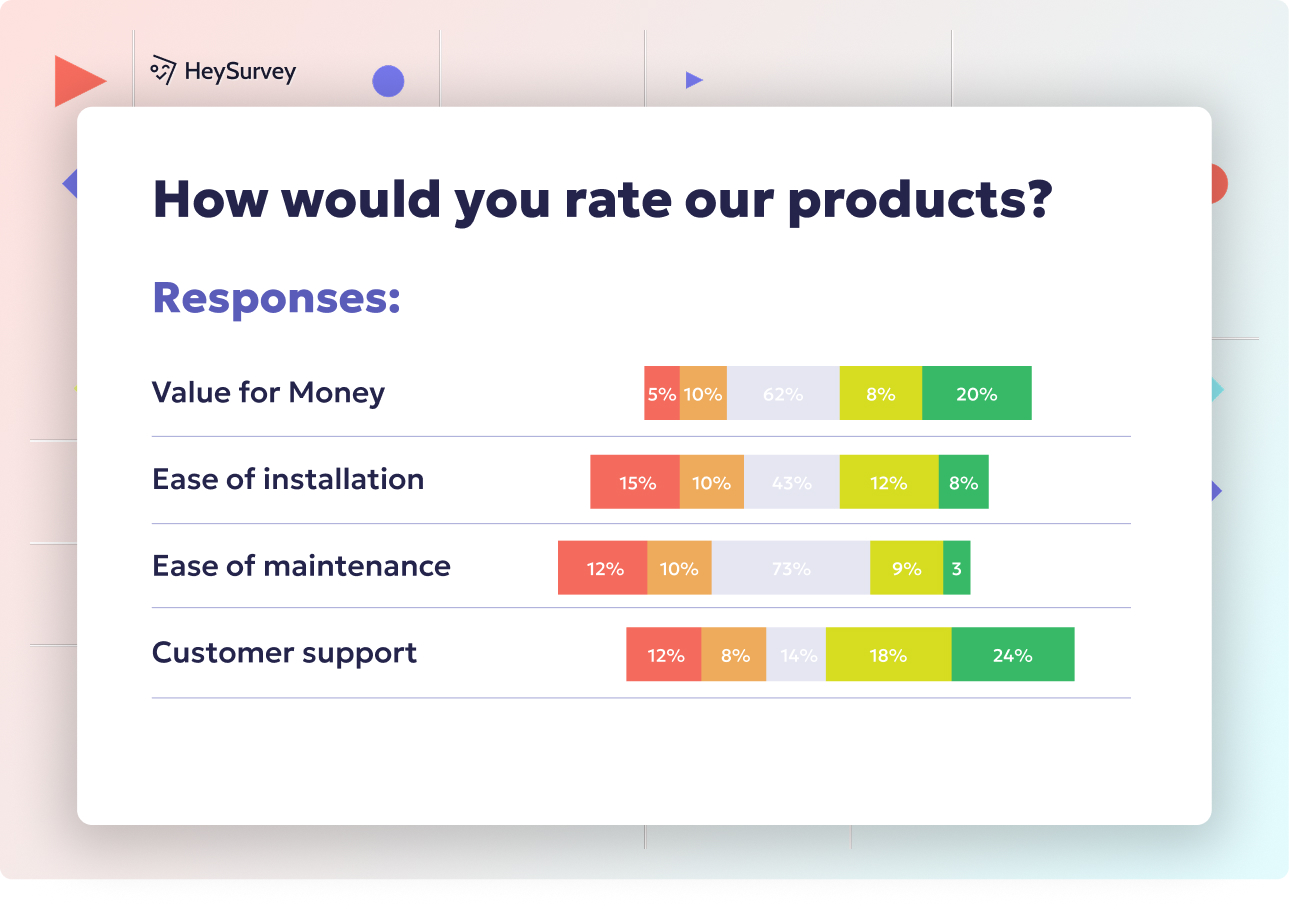
Creating a demographic survey for college students with HeySurvey is as easy as pie—follow these three simple steps to get your project up and running in no time!
Step 1: Create a New Survey
- Head to HeySurvey and click “Create New Survey”.
- Choose to start from an Empty Sheet for full control, or pick a Pre-built Template tailored for student surveys to save time.
- Give your survey an internal name so you know what you’re working on behind the scenes.
You’re now in the Survey Editor, where all the magic happens.
Step 2: Add Your Questions
- Click the “Add Question” button at the top or between existing questions in the editor.
- Select the question type: Text, Choice, Scale, Number, Date, etc.—perfect for all those demographic queries like age, major, or language spoken.
- Type your question, add descriptions if needed, and customize settings (mandatory answer, multiple choice, “Other” option, etc.).
- To speed things up, duplicate similar questions or drag to reorder.
- Remember, you can also pop in images or GIFs to keep things lively and engaging!
Step 3: Publish Your Survey
- When you’re happy with your questions and layout, hit “Preview” to see it through your students’ eyes.
- Fine-tune any design or wording using the Designer Sidebar during this preview.
- Once ready, click “Publish”. Keep in mind, publishing requires a free account so you can access results later.
- Grab the shareable link or grab the embed code to drop the survey right into your site or emails.
Bonus Steps: Make It Really Shine
- Apply Branding: Upload your college logo and adjust colors/fonts in the Designer Sidebar to reflect your institution’s style.
- Define Settings: Set start/end dates, limit responses, add a completion redirect URL, or allow respondents to view results on certain question types.
- Skip & Branch Logic: Use branching to create custom paths — for example, if a student says they live off-campus, skip housing questions! This keeps surveys efficient and relevant.
Ready to get started? You can open a survey template with the button below and jump right in!
Academic Status & Program Demographics
Why & When to Use
Academic demographics surveys connect the dots between students’ academic choices and their campus experience. By surveying class standing, program, or college enrollment, institutions can see where students are plugging in and which paths are most traveled. These questions are best presented during advising sessions, academic intake appointments, or annual reviews of program effectiveness.
Having this data helps:
- Align support services—like tutoring or career advising—with student needs
- Evaluate program growth, retention, and student satisfaction
- Identify patterns of academic success and potential barriers for various majors
These questions give advisors and program managers valuable insights for day-to-day support and long-term improvement.
5 Sample Questions
What is your current class standing (first-year, sophomore, junior, senior, graduate)?
Which college or school within the university are you enrolled in?
What is your declared major or program of study?
Are you attending full-time or part-time this semester?
How many credit hours have you completed toward your degree?
With program of study questions, colleges can plan thoughtfully for growth, resource allocation, and student achievement—plus, it helps students feel seen in their unique academic journey.
Inclusive demographic survey questions that allow respondents to self-describe their identities can enhance data accuracy and foster a more inclusive environment. (spectrumcenter.umich.edu)
Socioeconomic Background Demographics
Why & When to Use
Understanding students’ backgrounds is a game changer for creating fair and supportive campus policies. Using socioeconomic survey questions for college, administrators can tailor financial aid, identify first-generation students, and direct outreach where it matters most. Collect these during financial aid application follow-ups, scholarship forms, or via specific support program intake.
Gathering these insights lets colleges:
- Develop scholarships, grants, and emergency funding for those with the greatest need
- Launch initiatives to support first-gen student demographics, like mentorship or family orientation
- Monitor how economic background affects retention, engagement, and success
Approaching these topics with care and providing context goes a long way in building trust with students.
5 Sample Questions
Are you the first person in your immediate family to attend college?
What was your household’s approximate annual income last year?
Did you qualify for free or reduced-price lunch in high school?
Are you currently employed while enrolled? If yes, how many hours per week?
Do you receive need-based scholarships or grants?
Answers to these questions can reveal stories as diverse as the student body itself—and they drive key decisions around support and access.
Cultural, Ethnicity & Language Demographics
Why & When to Use
If colleges want to grow a truly inclusive campus, it starts with asking about college ethnicity survey questions and language experiences. These questions give depth to the student voice, helping institutions design multicultural programming, guide DEI strategies, and support language diversity. Surveying students at orientation, through campus climate assessments, or multicultural center programs yields the best results.
By collecting this info, colleges can:
- Support diverse student groups and foster a sense of belonging for all
- Ensure programming reflects the full spectrum of campus cultures
- Track the impact of DEI efforts on student satisfaction and success
Being intentional and respectful in phrasing shows students their identities genuinely matter.
5 Sample Questions
What is your race or ethnicity? (Select all that apply.)
Is English your first language?
What language is primarily spoken at home?
Do you identify with an indigenous tribe or nation?
Which cultural or heritage student organizations do you participate in?
Clear, inviting language demographics in higher education questions reveal the rich blend that makes every campus unique.
Cultural mismatches in translating sociodemographic questions can lead to measurement errors, underscoring the need for culturally and linguistically appropriate survey design. (surveypractice.org)
Housing & Living Arrangement Demographics
Why & When to Use
Understanding where and how students live is crucial to running a happy, functional campus. Student housing demographic questions shape decisions about residence life, housing demand, parking, and commuter services. These are typically included every semester in housing sign-up forms or commuter surveys.
These questions help colleges:
- Balance room assignments and predict demand for future academic years
- Tailor commuter resources, parking allocation, and transit services
- Address challenges unique to families, roommates, or independent students
The goal is to make every living situation feel supported, no matter the arrangement.
5 Sample Questions
Where do you currently live? (On-campus residence hall, off-campus apartment, family home, etc.)
How far is your primary residence from campus?
Do you live with family, roommates, partner/spouse, or alone?
Do you have dependent children living with you?
Are you interested in on-campus housing next academic year?
Answers to these commuter student survey questions guide not only housing plans but also student wellness and campus engagement.
Technology Access & Learning Environment Demographics
Why & When to Use
In today’s digital-first world, technology access survey college students questions are vital. Knowing what devices students use, their comfort with online systems, and their study environments shapes the success of online learning, hybrid courses, and digital equity projects. Best practice is to include these questions in start-of-term tech readiness surveys or as part of digital resource outreach.
This data lets colleges:
- Proactively support students with limited tech access or digital skills
- Provide targeted resources, like laptop loan programs or Wi-Fi hotspots
- Design courses that are accessible to a wide range of technological needs
Building a more connected campus starts with understanding every student’s digital starting point.
5 Sample Questions
Do you have reliable high-speed internet at your primary residence?
Which devices do you regularly use for coursework? (Laptop, tablet, smartphone, etc.)
How comfortable are you using the university’s learning management system?
Do you have access to a quiet study space?
Have you encountered accessibility barriers with online course materials?
Insightful digital equity demographics can move a campus from simply “online” to truly inclusive and innovative.
Health, Wellness & Disability Demographics
Why & When to Use
Supporting students’ health and well-being should always be a top priority. Using student health demographic questions illuminates needs around mental health, disability accommodations, and wellness programming. The best time to ask these is at health center intake or annual wellness surveys.
Institutions use this data to:
- Develop and expand counseling and mental health resources
- Coordinate accommodations for students with documented disabilities
- Target wellness campaigns to areas where students need it most
As always, keeping questions optional and confidential builds trust and encourages honest feedback.
5 Sample Questions
Do you have a documented disability that requires accommodations?
How would you rate your overall mental health over the past month?
Are you currently enrolled in the university’s health insurance plan?
How many days per week do you engage in physical activity?
Do you identify as a student-athlete?
A robust disability survey for college and wellness section creates a caring, supportive environment for all students.
Student Engagement & Extracurricular Demographics
Why & When to Use
An involved student is often a thriving student. Using student engagement demographics questions reveals how students connect with campus life, clubs, volunteering, and programs abroad. These questions are best included in end-of-year assessments or at involvement fairs when students’ activities are fresh.
With this info, colleges can:
- Assess the impact of student organizations and leadership programs
- Support retention and leadership pipelines for under-involved groups
- Celebrate and strengthen community service and study abroad efforts
Helping students find their own “why” for getting involved is the key to unlocking campus energy.
5 Sample Questions
How many campus organizations are you actively involved in?
Have you held a leadership position in any student group?
Do you participate in volunteer or service-learning programs?
How often do you attend campus events per month?
Are you currently participating in study abroad or exchange programs?
Responses to these extracurricular survey questions point the way to a more spirited, engaged, and well-rounded campus.
Best Practices: Dos and Don’ts for Collecting Demographic Data from College Students
Dos
Collecting demographic data isn’t just about the questions—it’s about trust and respect. Here are the top dos:
- Obtain informed consent and explain why you’re collecting data
- Offer inclusive, multi-select, and open-ended response options
- Keep questions optional when they’re sensitive
- Pilot test with real students for clarity and bias
- Secure and anonymize data in line with privacy standards like FERPA and GDPR
These best practices ensure students feel seen, respected, and safe sharing their info.
Don’ts
Equally important are the don’ts:
- Don’t force disclosure of sensitive identities
- Avoid outdated, restrictive, or binary categories
- Don’t collect data without a clear action plan for how you’ll use it
- Don’t treat students as single-category checkboxes—intersectionality matters
- Don’t ignore accessibility when designing your survey
With mindful practice, collecting demographic data can be empowering and transformative.
Being playful, transparent, and careful with best practices for demographic surveys lets every student know: their voice counts.
Colleges that master the art (and science) of demographic surveys don’t just collect numbers—they empower their students, shape programs, and build stronger, more inclusive communities. When in doubt, keep it kind, clear, and flexible. Every thoughtfully asked question is a step toward campus excellence.
Related Demographic Survey Surveys
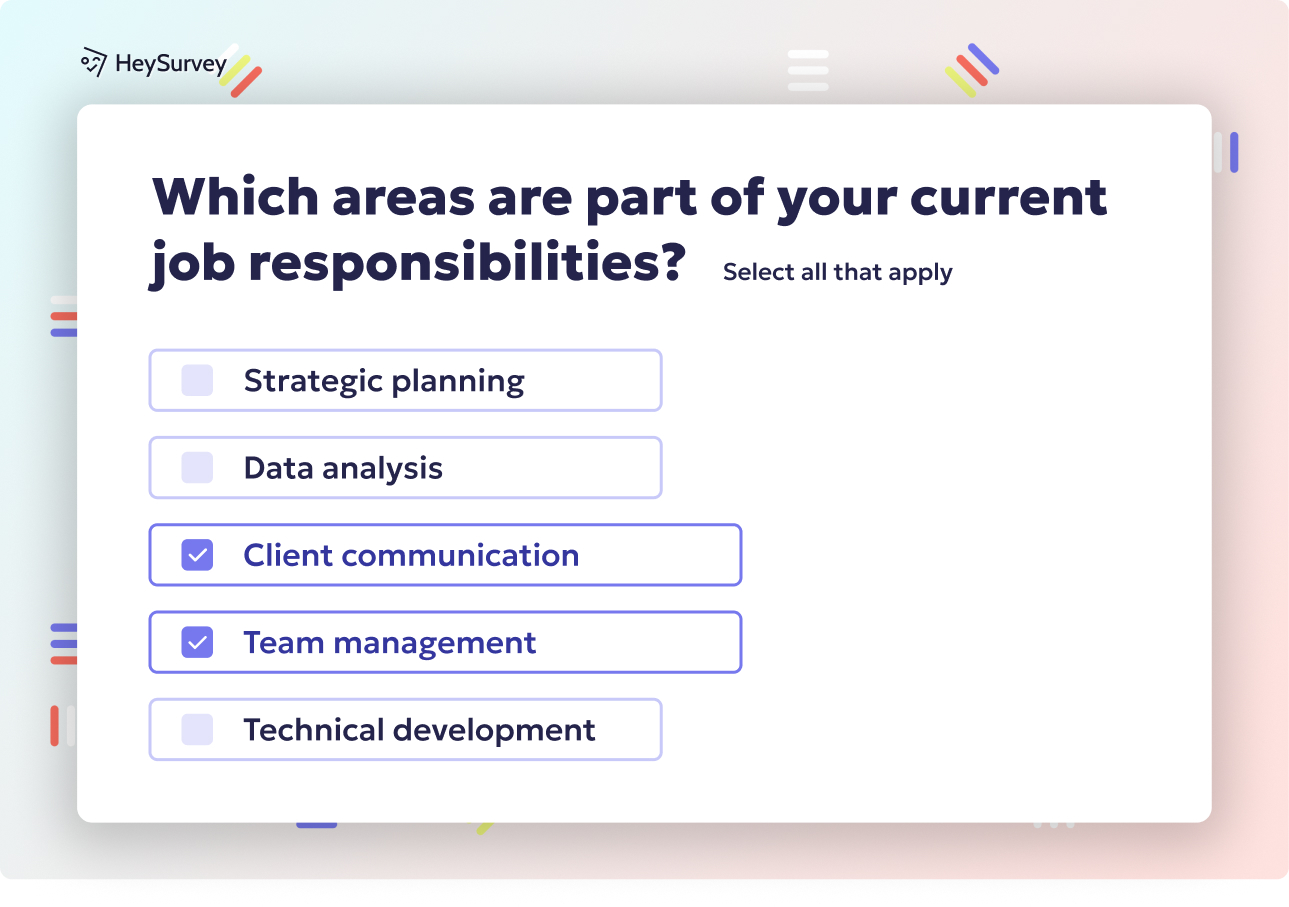
25 Poverty Survey Questions for Measuring Household Poverty Effectively
Explore a comprehensive guide with over 35 poverty survey questions covering demographics, income...
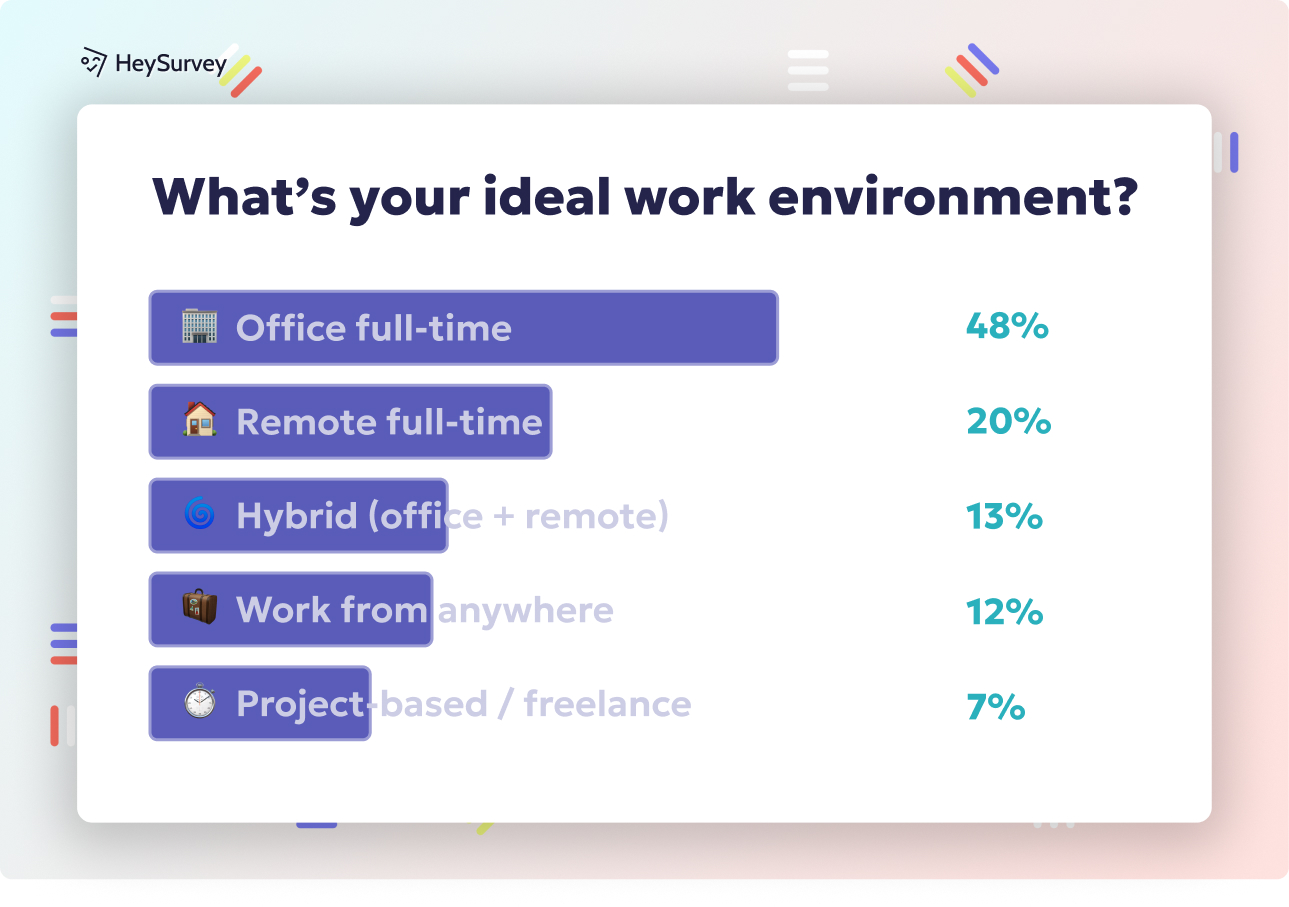
32 Questions About Homelessness: Essential Surveys to Understand Housing Insecurity
Explore 27 essential questions about homelessness across demographics, attitudes, needs, services...

31 American Community Survey Questions: Types & Expert Tips
Explore 35 American Community Survey questions with types, sample items, and expert tips to maste...
